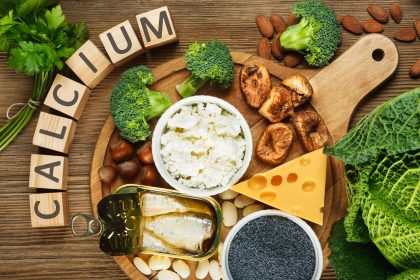Tinned fish has transformed from humble wartime sustenance into a gourmet ingredient gracing upscale charcuterie boards and trendy restaurant menus. Yet many people still hesitate when encountering those tiny bones nestled within their favorite sardines or salmon. The truth about these often-discarded morsels might completely change how you approach your next tin of fish.
Nutrition experts are increasingly vocal about the hidden nutritional goldmine sitting right inside those familiar metal containers. What once seemed like an inconvenience or texture issue actually represents one of the most concentrated sources of essential nutrients available in modern food systems. The transformation these bones undergo during processing creates a unique nutritional profile that rivals expensive supplements.
The revelation about tinned fish bones comes at a perfect time when consumers are seeking affordable, convenient nutrition sources that deliver maximum health benefits. Understanding the science behind these tiny nutritional powerhouses could revolutionize your approach to healthy eating while saving money and reducing food waste.
1. The canning process creates perfectly safe, digestible bones
The industrial canning process, known as retort sterilization, works magic on fish bones that many people never fully appreciate. This sophisticated process heats tinned fish under intense pressure to temperatures exceeding 240 degrees Fahrenheit, fundamentally altering the bone structure in remarkable ways.
During this high-heat, high-pressure treatment, the calcium structure within fish bones breaks down completely, transforming hard, potentially dangerous bones into soft, chalky textures that dissolve easily in your mouth. This process mimics what happens to slow-cooked marrow bones, creating a spoonable, creamy consistency.
The transformation eliminates any safety concerns associated with consuming fish bones, as the softened structure poses no choking hazard or digestive risk for most people. The bones become so tender that they blend seamlessly with the fish flesh, often going unnoticed by consumers.
This industrial process also kills all potential pathogens while maintaining the nutritional integrity of both the fish and its bones, creating a shelf-stable product that retains maximum health benefits for extended periods.
2. Different fish types offer unique bone benefits
The canning process affects different fish species in fascinating ways, with each type providing distinct textural and nutritional experiences. Understanding these differences helps consumers make informed choices based on their preferences and health goals.
Sardines and anchovies contain extremely delicate, fine bones that virtually disintegrate during the canning process. These tiny bones blend completely with the fish meat, creating a smooth texture while delivering concentrated nutrition that many people consume without even realizing it.
Salmon, being a larger fish, contains more substantial bones, particularly the notorious pin bones that many home cooks struggle to remove. However, canning transforms these potentially problematic bones into soft, edible components that actually contribute to the characteristic creamy texture of quality canned salmon.
The size differences between fish species create varying levels of noticeable bone content, allowing consumers to choose products that match their texture preferences while still accessing the nutritional benefits these bones provide.
3. Tinned fish bones deliver bioavailable calcium powerhouse
The calcium content in tinned fish bones represents one of the most easily absorbed forms of this essential mineral available in natural food sources. Unlike synthetic calcium supplements that often pass through the digestive system unused, the calcium in softened fish bones integrates seamlessly with other nutrients for optimal absorption.
This bioavailable calcium plays crucial roles in maintaining bone density, supporting muscle function and enabling proper nerve transmission throughout the body. The natural form found in fish bones works synergistically with other minerals present in the fish, enhancing overall nutritional uptake.
For individuals who avoid dairy products or struggle with lactose intolerance, tinned fish bones provide an excellent alternative calcium source that doesn’t cause digestive distress. The calcium concentration in these bones often exceeds that found in traditional dairy products, making them particularly valuable for specific dietary needs.
The combination of calcium with other bone-supporting nutrients creates a comprehensive mineral profile that supports skeletal health more effectively than isolated calcium supplements alone.
4. Boron content supports hormonal balance and bone retention
Beyond calcium, tinned fish bones contain significant amounts of boron, a trace mineral that plays critical roles in hormone metabolism and bone health maintenance. This often-overlooked nutrient works behind the scenes to optimize how your body processes estrogen and maintains bone density over time.
Boron deficiency has been linked to decreased estrogen effectiveness and increased bone loss, particularly in postmenopausal women. The natural boron content in fish bones helps support optimal hormone function while enhancing calcium retention in bone tissue.
Research suggests that adequate boron intake can improve bone strength and reduce the risk of osteoporosis, making tinned fish bones particularly valuable for aging populations concerned about skeletal health.
The trace mineral also supports cognitive function and may help reduce inflammation throughout the body, adding additional health benefits beyond its bone-supporting properties.
5. Longevity studies reveal remarkable life extension benefits
Emerging research on tinned fish consumption has uncovered fascinating connections between regular intake and increased lifespan. Studies comparing populations that regularly consume tinned fish with bones to those who don’t show measurable differences in longevity outcomes.
The combination of omega-3 fatty acids, complete proteins, and mineral-rich bones creates a nutritional profile that supports multiple body systems simultaneously. This comprehensive nutrition appears to contribute to cellular health and reduced aging markers in ways that isolated supplements cannot replicate.
Research specifically examining canned sardine consumption has shown superior health outcomes compared to fish oil supplementation alone, suggesting that the whole-food approach provides synergistic benefits that isolated nutrients cannot match.
The convenience and shelf stability of tinned fish makes it easier for people to maintain consistent intake of these longevity-supporting nutrients, potentially contributing to the observed life extension benefits.
6. Cancer-fighting properties show promising potential
Preliminary research into the cancer-protective properties of tinned fish consumption has yielded encouraging results, particularly regarding colorectal cancer prevention. The unique combination of nutrients found in whole tinned fish, including the bones, appears to create protective effects against certain cancer types.
The omega-3 fatty acids present in fish naturally, combined with the mineral content from bones, may work together to reduce inflammation and support immune system function in ways that help prevent cancer development.
Selenium, another mineral concentrated in fish bones, acts as a powerful antioxidant that protects cells from oxidative damage that can lead to cancerous changes over time.
While research continues, the early findings suggest that regular consumption of whole tinned fish, bones included, may provide significant protective benefits against various cancer types through multiple biological mechanisms.
7. Unmatched convenience meets exceptional nutrition
The practical benefits of tinned fish bones extend far beyond their nutritional content to include remarkable convenience and affordability factors that make healthy eating more accessible for busy lifestyles.
Unlike fresh fish that requires careful preparation and immediate consumption, tinned fish provides instant access to complete nutrition that requires no cooking, cleaning, or special storage requirements. The bones add nutritional value without any additional preparation time or cost.
The shelf-stable nature of tinned fish makes it an ideal emergency protein source that maintains its nutritional integrity for years when properly stored. This reliability factor makes it valuable for meal planning and food security considerations.
Compared to expensive calcium supplements and omega-3 products, tinned fish with bones delivers superior nutrition at a fraction of the cost while providing additional protein and other essential nutrients that supplements cannot offer.
Important safety considerations for specific populations
While tinned fish bones are safe for most people, certain individuals should exercise caution or avoid consumption based on specific health conditions or circumstances.
People with chronic kidney disease need to monitor phosphorus intake carefully, as fish bones contain elevated levels of this mineral that could exacerbate kidney problems. Consultation with healthcare providers is essential for these individuals.
Individuals with swallowing difficulties or certain gastrointestinal conditions should avoid consuming any bone material, even softened versions, to prevent complications or discomfort during digestion.
Pregnant women should consider mercury content in their fish choices, though most tinned fish varieties contain relatively low mercury levels compared to larger fish species.
Maximizing the benefits of tinned fish bone consumption
To optimize the health benefits of tinned fish bones, consider incorporating them into your diet through various preparation methods that enhance both nutrition and palatability.
Mashing sardines or salmon with lemon juice can further break down any remaining bone structure while adding vitamin C that enhances mineral absorption. This technique creates smooth spreads perfect for crackers or toast.
Combining tinned fish with complementary foods like whole grains, vegetables, and healthy fats creates balanced meals that maximize nutrient utilization while providing sustained energy and satisfaction.
Regular consumption appears more beneficial than occasional large portions, suggesting that incorporating small amounts of tinned fish into weekly meal routines provides optimal health outcomes.
The evidence supporting tinned fish bone consumption continues growing as researchers uncover more benefits from this overlooked nutritional treasure. From supporting bone health and hormonal balance to potentially extending lifespan and fighting cancer, these tiny bones pack an impressive nutritional punch that rivals expensive supplements while providing superior convenience and affordability.
For most people, embracing the bones in tinned fish represents a simple way to dramatically increase nutrient intake without additional cost or preparation time. As nutrition science continues revealing the benefits of whole-food approaches over isolated supplements, tinned fish bones stand out as a perfect example of how traditional foods can provide superior nutrition in convenient, accessible formats.

















